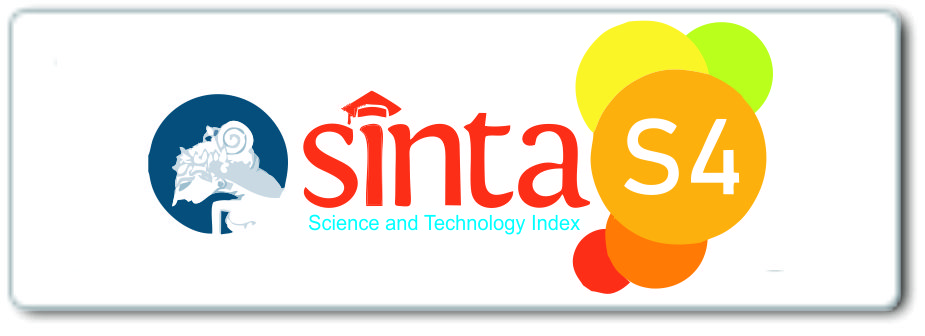Literature Review: Happy Breastfeeding With Hypno Breastfeeding
DOI:
https://doi.org/10.56988/chiprof.v1i2.16Keywords:
Hypno Breastfeeding, Happy BreastfeedingAbstract
Breastfeeding is a very precious time for a mother who has just given birth to her baby. Where at this time, the mother gives breast milk which is called a golden liquid to the baby. Breast milk is the optimal nutrition for babies at the beginning of their life. However, in the process of breastfeeding, mothers often feel anxious and not confident that they can breastfeed their babies well and can provide enough breast milk for their babies' nourishment and growth. Peace of mind and feelings can affect the process of milk production. Hypnobreastfeeding is one of the techniques to help mothers to feel calm, comfortable, relaxed, and happy while breastfeeding. Giving positive affirmative sentences about Hypnobreastfeeding can help reduce anxiety and increasing the mother's sense of self-worth will help the nursing process go more easily. This study aims to explain how hypnobreastfeeding is used in nursing mothers. The method used is a literature review by utilizing Google Scholar and PubMed data. The results of a literature search found that Hypnobreastfeeding is beneficial for breastfeeding mothers. Hypnobreastffeding can overcome anxiety, increase motivation and confidence in mothers, and can increase breast milk production.
Downloads
References
C. M. Dieterich, J. P. Felice, E. O’Sullivan, and K. M. Rasmussen, “Breastfeeding and Health Outcomes for the Mother-Infant Dyad,” Pediatr. Clin. North Am., vol. 60, no. 1, pp. 31–48, 2013, doi: 10.1016/j.pcl.2012.09.010.
S. Meedya, K. Fahy, and A. Kable, “Factors that positively influence breastfeeding duration to 6 months: A literature review,” Women and Birth, vol. 23, no. 4, pp. 135–145, 2010, doi: 10.1016/j.wombi.2010.02.002.
J. Hahn-Holbrook, “8 The Psychological Effects of Breastfeeding,” Glob. Heal. Netw. Collctions, pp. 1–33, 2018, doi: 10.21428/3d48c34a.4eb43e95.
S. Lyons, S. Currie, S. Peters, T. Lavender, and D. M. Smith, “The association between psychological factors and breastfeeding behaviour in women with a body mass index (BMI) ≥30 kg m −2 : a systematic review,” Obes. Rev., vol. 19, no. 7, pp. 947–959, 2018, doi: 10.1111/obr.12681.
W. Umami and A. Margawati, “Faktor yang mempengaruhi pemberian ASI eksklusif,” Wellness Heal. Mag., vol. 2, no. 2, pp. 283–291, 2020, doi: 10.30604/well.022.82000115.
K. M. Krol and T. Grossmann, “Psychological effects of breastfeeding on children and mothers,” Bundesgesundheitsblatt - Gesundheitsforsch. - Gesundheitsschutz, vol. 61, no. 8, pp. 977–985, 2018, doi: 10.1007/s00103-018-2769-0.
N. N. D. Witari, K. N. Arini, and N. M. Widiastuti, “Hypno-Breastfeeding Reduces Anxiety of Breastfeeding Mothers During the Covid-19 Pandemic,” PLACENTUM J. Ilm. Kesehat. dan Apl., vol. 10, no. 1, p. 30, 2022, doi: 10.20961/placentum.v10i1.57917.
L. P. Sari, H. Salimo, and U. R. Budihastuti, “Hypnobreastfeeding Dapat Menurunkan Kecemasan Pada Ibu Post Partum,” J. Kebidanan dan Kesehat. Tradis., vol. 4, no. 1, pp. 20–27, 2019, doi: 10.37341/jkkt.v4i1.95.
Y. Asih, “Hypnobreastfeeding dan Motivasi Pemberian ASI Hypnobreastfeeding and Motivation for Breastfeeding,” J. kebidanan, vol. 11, no. pemberian ASI eksklusif, p. 17, 2020.
F. P. Astuti, H. Windayanti, and I. Sofiyanti, “Hypnobreastfeeding dan Motivasi Ibu Menyusui,” Indones. J. Midwifery, vol. 3, no. 1, pp. 46–50, 2020, doi: 10.35473/ijm.v3i1.492.
H. Windayanti, F. P. Astuti, and I. Sofiyanti, “Hypnobreastfeeding dan Kualitas Tidur pada Ibu Menyusui,” Indones. J. Midwifery, vol. 3, no. 2, p. 151, 2020, doi: 10.35473/ijm.v3i2.631.
I. Sofiyanti, F. P. Astuti, and H. Windayanti, “Penerapan Hypnobreastfeeding pada Ibu Menyusui,” Indones. J. Midwifery, vol. 2, no. 2, pp. 84–89, 2019, doi: 10.35473/ijm.v2i2.267.
M. S. I. N. Ringgi, Y. D. Pora, and Y. M. H. Keytimu, “Pemberian Terapi Hypno-Breastfeeding Dan Perawatan Kangaroo Mother Care (Kmc) Sebagai Strategi Cepat Pemulihan Bayi Berat Lahir Rendah,” Sebatik, vol. 26, no. 1, pp. 217–222, 2022, doi: 10.46984/sebatik.v25i2.1505.
A. M. Krouse, “The Family Management of Breastfeeding Low Birth Weight Infants,” J. Hum. Lact., vol. 18, no. 2, pp. 155–165, 2002, doi: 10.1177/089033440201800207.
J. L. Pawluski, J. S. Lonstein, and A. S. Fleming, “The Neurobiology of Postpartum Anxiety and Depression,” Trends Neurosci., vol. 40, no. 2, pp. 106–120, 2017, doi: 10.1016/j.tins.2016.11.009.
M. C. Fajardo, J. Florido, C. Villaverde, C. M. Oltras, A. R. González-Ramirez, and F. González-Gómez, “Plasma levels of β-endorphin and ACTH during labor and immediate puerperium,” Eur. J. Obstet. Gynecol. Reprod. Biol., vol. 55, no. 2, pp. 105–108, 1994, doi: 10.1016/0028-2243(94)90062-0.
K. U. Moberg and D. K. Prime, “Oxytocin Effects in Mothers and Infants during Breastfeeding,” Acta Obstet. Gynecol. Scand., vol. 9, no. 6, pp. 201–206, 2013, doi: 10.3109/00016349009036151.
M. Jalal, M. Dolatian, Z. Mahmoodi, and R. Aliyari, “The relationship between psychological factors and maternal social support to breastfeeding process,” Electron. physician, vol. 9, no. 1, pp. 3561–3569, 2017, doi: 10.19082/3561.
W. S. De Araújo, W. G. Romero, E. Zandonade, and M. H. C. Amorim, “Effects of relaxation on depression levels in women with high-risk pregnancies: a randomised clinical trial1,” Rev. Lat. Am. Enfermagem, vol. 24, 2016, doi: 10.1590/1518-8345.1249.2806.
L. P. Sari, H. Salimo, and U. R. Budihastuti, “Optimizing the Combination of Oxytocin Massage and Hypnobreastfeeding for Breast Milk Production among Post-Partum Mothers,” J. Matern. Child Heal., vol. 02, no. 01, pp. 20–29, 2017, doi: 10.26911/thejmch.2017.02.01.03.
M. Toosi, M. Akbarzadeh, and Z. Ghaemi, “The Effect of Relaxation on Mother’s Anxiety and Maternal–Fetal Attachment in Primiparous IVF Mothers,” J. Natl. Med. Assoc., vol. 109, no. 3, pp. 164–171, 2017, doi: 10.1016/j.jnma.2017.03.002.
I. Kusumawaty and Yunike, “Pemberdayaan Kader Kesehatan Mengatasi Kecemasan Masa Adaptasi,” CARARDDE J. Pengabdi. Kpd. Masy., vol. 4, no. 1, pp. 575–583, 2021.
N. W. Armini, “Hypnobreastfeeding Awali Suksesnya ASI Eksklusif,” J. Skala Husada, vol. 1, pp. 21–29, 2016, [Online]. Available: http://download.garuda.ristekdikti.go.id/article.php?article=808447&val=13183&title=HYPNOBREASTFEEDING, STARTING EXCLUSIVE BREASTFEEDING TO BE SUCCESS.
Z. D. Ulfa and Y. Setyaningsih, “Tingkat Stres Ibu Menyusui dan Pemberian Asi pada Bulan Pertama,” J. Litbang Media Inf. Penelitian, Pengemb. dan IPTEK, vol. 16, no. 1, pp. 15–28, 2020, doi: 10.33658/jl.v16i1.145.
N. A. Rangkuti, N. S. Batubara, R. A. Siregar, E. Suryani, R. D. Siregar, and M. L. Harahap, “The Effect of Hypnobreastfeeding Technique on the Production of Breast Milk in Postpartum Mothers in Independent Practice Midwives,” Int. J. Public Heal. Excell., vol. 1, no. 1, pp. 12–16, 2022, doi: 10.55299/ijphe.v1i1.4.
Y. N. Aini, Hadi, S. Rahayu, N. Pramono, and D. K. Mulyantoro, “Effect of Combination of Breast Care and Oxytocin Massage on Breast Milk Secretion in Postpartum Mothers,” Belitung Nurs. J., vol. 3, no. 6, pp. 784–790, 2017, doi: 10.33546/bnj.293.
M. L. Okun, R. A. Mancuso, C. J. Hobel, C. D. Schetter, and M. Coussons-Read, “Poor sleep quality increases symptoms of depression and anxiety in postpartum women,” J. Behav. Med., vol. 41, no. 5, pp. 703–710, 2018, doi: 10.1007/s10865-018-9950-7.
B. Bais et al., “The impact of objective and subjective sleep parameters on depressive symptoms during pregnancy in women with a mental disorder: An explorative study,” Int. J. Environ. Res. Public Health, vol. 16, no. 9, pp. 1–10, 2019, doi: 10.3390/ijerph16091587.
B. Figueiredo, C. C. Dias, S. Brandão, C. Canário, and R. Nunes-Costa, “Breastfeeding and postpartum depression: State of the art review,” J. Pediatr. (Rio. J)., vol. 89, no. 4, pp. 332–338, 2013, doi: 10.1016/j.jped.2012.12.002.
M. E. Coussons-Read, “The Psychoneuroimmunology of Stress in Pregnancy,” Curr. Dir. Psychol. Sci., vol. 21, no. 5, pp. 323–328, 2012, doi: 10.1177/0963721412453720.
D. Lydiani, Darmayanti, and Ruslinawati, “Pengaruh Hypnobreastfeeding Terhadap Peningkatan Pengeluaran ASI di Wilayah Kerja Puskesmas 09 November Banjarmasin,” Caring Nurs. J., vol. 4, no. 2, pp. 0–6, 2020.
B. T. Carolin, C. Suralaga, and F. Lestari, “Teknik Hypno-breastfeeding Untuk Kecukupan Asi pada Ibu Menyusui,” J. SMART Kebidanan, vol. 8, no. 1, p. 64, 2021, doi: 10.34310/sjkb.v8i1.428.
N. Risna Sumawati and N. Mira Yanti, “Penerapan Hypnobreastfeeding Dan Hypnoparenting Pada Ibu 2 Jam Post Partum,” J. Dunia Kesehat., vol. 5, no. 2, pp. 5–10, 2015.
N. Laily et al., “Implementation of hypnobreastfeeding therapy as an effort to reduce the incidence of underweight on children aged 0–6 months,” Open Access Maced. J. Med. Sci., vol. 9, no. E, pp. 123–126, 2021, doi: 10.3889/oamjms.2021.5686.
Downloads
Published
How to Cite
Issue
Section
License
Copyright (c) 2022 Kharisma Virgian

This work is licensed under a Creative Commons Attribution-NonCommercial 4.0 International License.




















